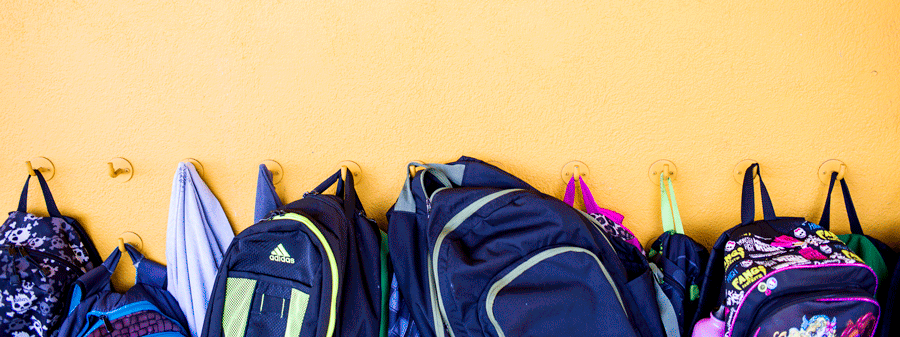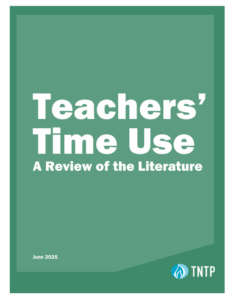We're privileged to partner every day with educators and system leaders across the country to ensure every student gets the opportunities they deserve. We also see first-hand how the challenges students face outside the classroom can keep them from making the most of those opportunities.
One of those challenges is food insecurity. When students come to school hungry because their families can't afford to put food on the table, they don't learn as much. That's why we're so concerned about the Trump Administration’s effort to cut Supplemental Nutrition Assistance Program (SNAP) benefits—also known as food stamps–for more than 3 million Americans, including nearly 1 million students. SNAP ensures that low-income families have access to fresh, nutritious food each day. More than that, it provides the boost they need to climb out of poverty, by allowing them to devote more of their income to rent, childcare, and growing their savings.
As we discuss in the following letter to the Department of Agriculture, the proposed rule would even deny many students from low-income families access to food at school, by jeopardizing their eligibility for free school lunch. For all these reasons, we urge the administration to withdraw the rule.
***
October 30, 2019
SNAP Program Design Branch
Program Development Division
Food and Nutrition Service
3101 Park Center Drive
U.S. Department of Agriculture
Alexandria, VA 22302
Re: Docket ID Number [FNS–2018–0037], ‘Revision of Categorical Eligibility in the Supplemental Nutrition Assistance’
Dear SNAP Program Design Branch:
On behalf of TNTP, a national education nonprofit, I appreciate the opportunity to comment on USDA’s Notice of Proposed Rule Making on a Revision of Categorical Eligibility in the Supplemental Nutrition Assistance Program (SNAP). Based on the USDA's own analysis, we believe the proposed changes would harm nearly one million students across the country and should be withdrawn.
Since 1997, we’ve partnered with more than 200 public school districts, charter school networks, and state departments of education to provide excellent teachers to the students who need them most. We’re privileged to work side-by-side every day with teachers and principals across the country, in communities where most students are from low-income households.
That means we see first-hand how food insecurity affects students. Put simply, hungry students don’t learn as much. For example, a study found students earn lower test scores just before their monthly SNAP benefits arrive, when their family’s food supply is more likely to be running low. And students who lose access to their SNAP benefits are more likely to repeat a grade and receive special education services.
SNAP plays a critical role in ensuring that hunger doesn’t keep students from reaching their full potential. But under the proposed rule, 3.1 million low-income people would lose SNAP benefits—many of them children. Eliminating states’ flexibility to account for housing and child care costs in determining SNAP eligibility—a policy option known as Broad-Based Categorical Eligibility, or Cat El—would mean that three-person families who earn as little as $27,000 a year or have only $2,200 on savings would no longer be eligible for benefits. Nine states would lose 15 percent or more of their SNAP participants, according to an analysis by Mathematica. In other words, hundreds of thousands of families would no longer be able to send their children to school well-fed and ready to learn.
But the effects of these benefit cuts would extend far beyond the ability to put food on the table at home. The USDA estimates the rule would jeopardize automatic access to free school meals for more than 497,000 students, since students who receive SNAP benefits are automatically certified to receive them. This, in turn, could make it harder for schools in low-income communities to easily offer free breakfast and lunch to all their students based on the percentage of families in their community who are eligible for SNAP. In addition, 40,000 children will completely lose eligibility for both free meals and be moved to reduced-priced school meals. As a result, families who lose access to crucial benefits may also find themselves saddled with debt from school meals they can’t afford.
The proposed rule would also make SNAP a much less effective tool to lift families out of poverty. Cat El allows families to remain eligible for SNAP while spending their income on critical expenses like rent and childcare, and while growing their emergency savings. By forcing more families to choose between food and other basic needs, the rule would keep millions more people trapped in the cycle of poverty.
Students from low-income households deserve access to fresh, nutritious food at home and at school. Their families deserve a fair chance at lifting themselves out of poverty. The proposed rule cuts against both these educational and moral imperatives and should be withdrawn.
Sincerely,
Daniel Weisberg
CEO
TNTP








